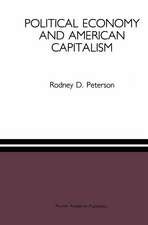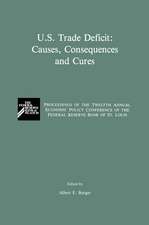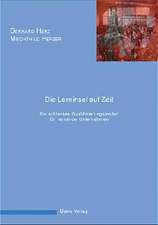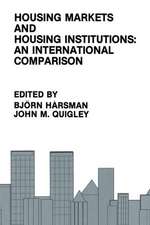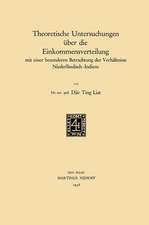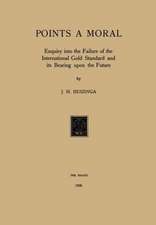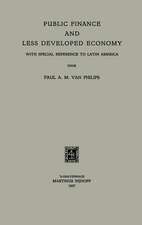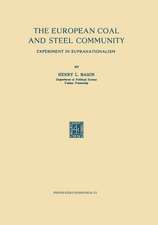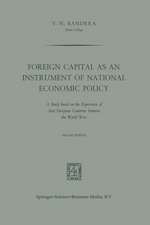Inhabiting the earth as a finite world: An examination of the prospects of providing housing in a finite world in which prosperity is fairly shared, natural resources are not depleted, and the environment is protected
Editat de Research Group on Living and Survivingen Limba Engleză Paperback – 13 oct 2011
| Toate formatele și edițiile | Preț | Express |
|---|---|---|
| Paperback (1) | 634.68 lei 6-8 săpt. | |
| SPRINGER NETHERLANDS – 13 oct 2011 | 634.68 lei 6-8 săpt. | |
| Hardback (1) | 640.88 lei 6-8 săpt. | |
| SPRINGER NETHERLANDS – 31 mai 1979 | 640.88 lei 6-8 săpt. |
Preț: 634.68 lei
Preț vechi: 746.69 lei
-15% Nou
Puncte Express: 952
Preț estimativ în valută:
121.46€ • 126.34$ • 100.27£
121.46€ • 126.34$ • 100.27£
Carte tipărită la comandă
Livrare economică 14-28 aprilie
Preluare comenzi: 021 569.72.76
Specificații
ISBN-13: 9789400992566
ISBN-10: 9400992564
Pagini: 180
Ilustrații: XIV, 163 p.
Dimensiuni: 155 x 235 x 9 mm
Greutate: 0.26 kg
Ediția:Softcover reprint of the original 1st ed. 1979
Editura: SPRINGER NETHERLANDS
Colecția Springer
Locul publicării:Dordrecht, Netherlands
ISBN-10: 9400992564
Pagini: 180
Ilustrații: XIV, 163 p.
Dimensiuni: 155 x 235 x 9 mm
Greutate: 0.26 kg
Ediția:Softcover reprint of the original 1st ed. 1979
Editura: SPRINGER NETHERLANDS
Colecția Springer
Locul publicării:Dordrecht, Netherlands
Public țintă
ResearchCuprins
1. The dangers threatening mankind.- 1.1 The interrelation of the problems.- 1.2 Natural resources.- 1.3 The food problem.- 1.4 The population problem.- 1.5 The effects on the environment.- 1.6 The significance of technological developments.- 1.7 Distribution of prosperity.- 2. Systems approach as a research method.- 2.1 Research strategy.- 2.2 The model approach.- 3. Seeking general data for a dynamic world-model.- 3.1 Population.- 3.2 Food.- 3.3 Natural resources.- 3.4 Energy.- 3.5 Pollution of the environment.- 3.6 Sharing prosperity.- 4. Basic elements of the building process.- 4.1 Specific input data.- 4.2 The Static approach to the limiting values.- 5. Possibilities for quantitative analysis of housing: test cases.- 5.1 The purpose of the test cases.- 5.2 Carib home in Surinam.- 5.3 Living in developing countries: Ghana development plan.- 5.4 Living in the industrial society.- 5.5 Comparison of test cases.- 6. The simulation model.- 6.1 General scheme of the model.- 6.2 Income trends.- 6.3 Income distribution.- 6.4 Population.- 6.5 Housing requirements.- 6.6 Agriculture and forestry.- 6.7 Pollution.- 6.8 The use of scarce resources.- 6.9 The limits.- 6.10 Simulation model results.- 7. Designing within the limits.- 7.1 Building estimate.- 7.2 Energy consumption and heat insulation.- 7.3 The specification of limits.- 7.4 Design methods.- 7.5 Designs for testing the specification of limits and the design method.- 8. The projects.- 8.1 Urban terraced house (Design: Frits Mastenbroek).- 8.2 A house in a poor country (Design: Piet Bennehey).- 8.3 House with own supply facilities: pyramid 2020 (Design: Willem van den Akker and Jan van Middelkoop).- 9. Conclusions and evaluation.- Appendix A: Some major air pollutants.- Appendix B: Technical life of the house.- Appendix C: Detailed estimates for pyramid 2020.- Appendix D: Heat and sound insulation.


